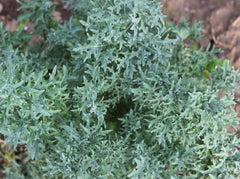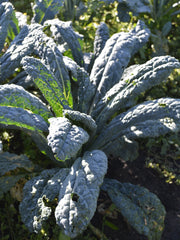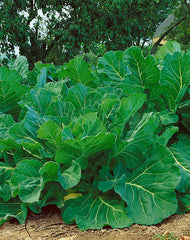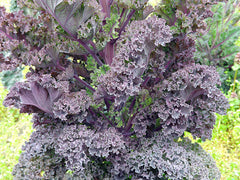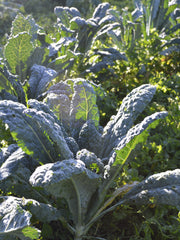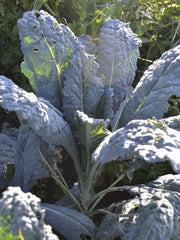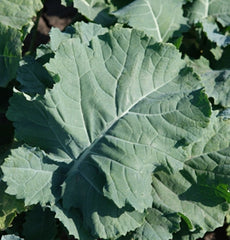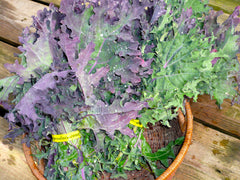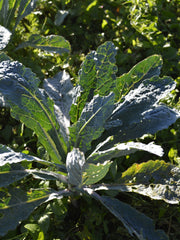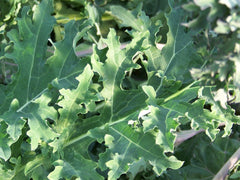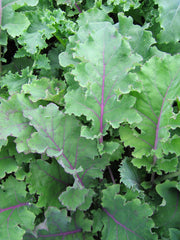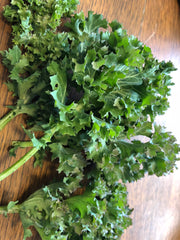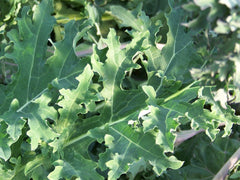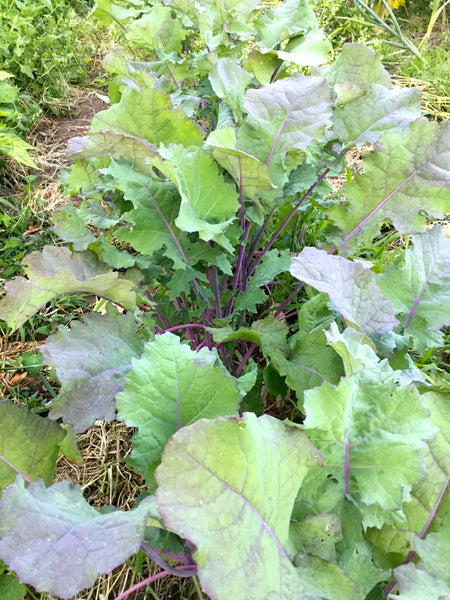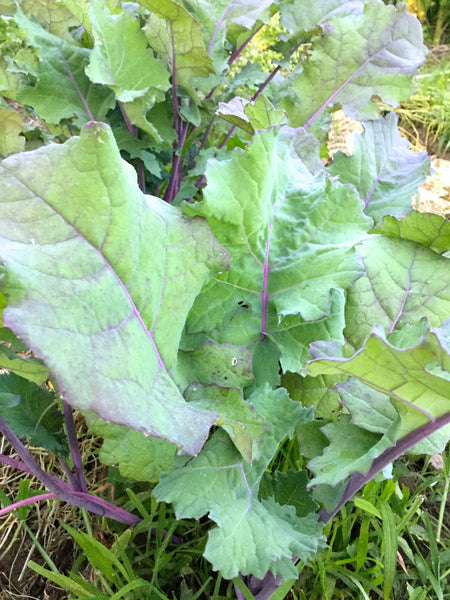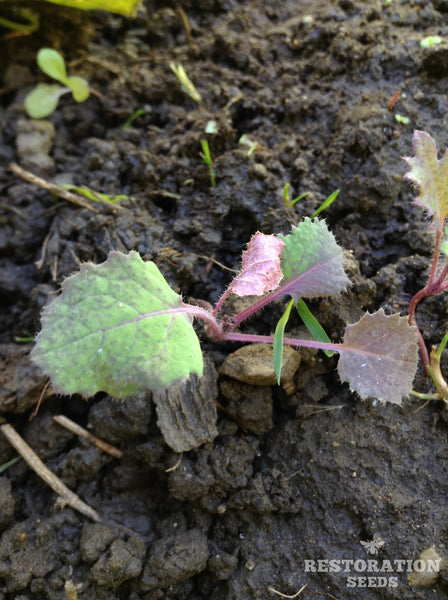Red Ruffled
Brassica napus pabularia
HOW TO GROW SIBERIAN KALE
Start indoors 4-6 weeks before last frost, plant out 4 weeks before frost. For fall harvest, transplant 13 weeks before first frost, without additional protection. In a hoophouse, you can plant 2-3 weeks later. Plants are hardy when small but may not feed you until spring. Direct sow anytime after last frost up to 6 weeks before first frost. For seed production, plant in late summer in the Pacific Northwest and coastal British Columbia for a more cold hardy plant. Becomes sweeter with frost and edible to about 22–25˚F. Survival at low temps 10˚F or cooler requires good mulch or snow cover to protect from wind freeze. Will cross with rutabagas. Row covers reduce cabbage worms and extend winter harvest. Soil pH 6.1-6.5. Hardiness zones 3-9. Biennial.
Days from maturity calculated from the date of seeding. Average 9,000 seeds per ounce. Average 112M seeds per acre. Federal germination standard: 75%. Usual seed life: 5 years. Isolation distance for seed saving: 1 mile.
Planting Depth 1/4-1/2”
Soil Temp. Germ. 55-75˚F
Days to Germ. 5-15
Plant Spacing 12-18”
Row Spacing 18-30”
Days To Maturity 60-70
Full Sun, Moist Well Drained
Days from maturity calculated from the date of seeding. Average 9,000 seeds per ounce. Average 112M seeds per acre. Federal germination standard: 75%. Usual seed life: 5 years. Isolation distance for seed saving: 1 mile.
Planting Depth 1/4-1/2”
Soil Temp. Germ. 55-75˚F
Days to Germ. 5-15
Plant Spacing 12-18”
Row Spacing 18-30”
Days To Maturity 60-70
Full Sun, Moist Well Drained
Red Ruffled Seed Count
1 Ounce ≈ 8,100 seeds
.25 Pound ≈ 32,400 seeds
- 200 Seeds$4.10
- 2000 Seeds$12.50
- 1 Ounce$26.00
- 1/4 lb$54.00
This new release is actually an old denizen of our own evolving Wild Garden. It has been part of the surviving kale tribe since the deepest freezes of the mid 90s. When we grew it at Gathering Together Farm last winter, the vigor, health, and performance in a commercial setting was impressive to everyone, including ...
This new release is actually an old denizen of our own evolving Wild Garden. It has been part of the surviving kale tribe since the deepest freezes of the mid 90s. When we grew it at Gathering Together Farm last winter, the vigor, health, and performance in a commercial setting was impressive to everyone, including Rodrigo, who harvested a treasure of “kale raab” from it during the hungry gap, before spring has arrived and markets are spare. He commented on the caliper of the tender stems, their weight, and sweetness. Leaves grey-green with purple-red veins and stems. Sow mid-July through late August. First leaves are flat, becoming more rumpled, edged with ruffled margins, and extra heavy by time bunching begins. In climates with winters above 5-10°F, most plants will live to produce red napini (aka “kale raab”) from late March through April—a welcome finale to production here. Super quality seed! Tags: Type: Siberian, Color: Bi-Colored, Specialty: Cool Climate, Season: Spring Fall Winter, Certification: Organic.
Learn More
Meet Your Farmer
We promote fair trade, organic practices and environmental responsibility throughout the Restoration Seeds supply chain. Below are the family farmers and seed suppliers who bring our open pollinated seeds to you.
Wild Garden Seed
Certified Organic by Oregon Tilth
Seed grower since 1994


Karen and I began Wild Garden Seed in 1994 at the same kitchen table where her laptop is sitting now. The seed business was an adjunct to our Wild Garden Salad business until September of 2001, when we left salad selling behind and rededicated all of our energies to making a livelihood as seed growers, breeders, and sellers. There were some very tough years there. In 2002 we began a joint venture with our friends John Eveland and Sally Brewer, owners of Gathering Together Farm, to grow and sell organic seed under the Wild Garden name. Gathering Together Farm provided the infrastructure, means of production, and home office services, Shoulder to Shoulder Farm provided the seed management, processing, research, and marketing. We shared many complimentary farm functions over the years: the insectary benefits of diverse flowers in a long period of blooming, the harvest synergies of biennial crop production together, peaks and ebbs in farming cash flow, and seasonally opportune infrastructure sharing. All of these made the farm function better and helped lift Wild Garden Seed into a self-sustaining, farm-based seed enterprise with an international reach. We sold seed to 41 countries in 2014, our 20th anniversary.
Reviews
